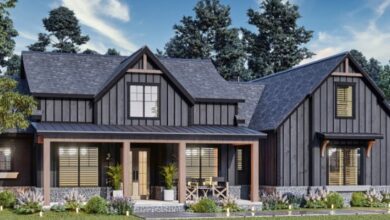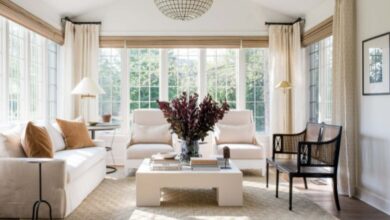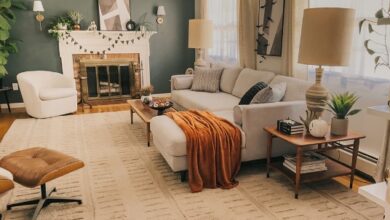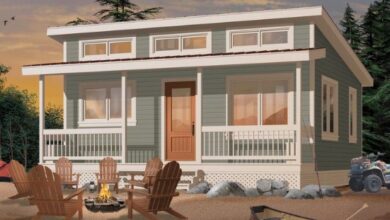Modern House Design
Modern house design encompasses a broad range of architectural styles that prioritize functionality, simplicity, and innovation. From sleek minimalist structures to eco-friendly designs, modern homes offer a blend of form and function that caters to contemporary lifestyles.
Let’s delve into the key features, principles, and trends of modern house design to inspire your next architectural venture.
1. Characteristics of Modern House Design
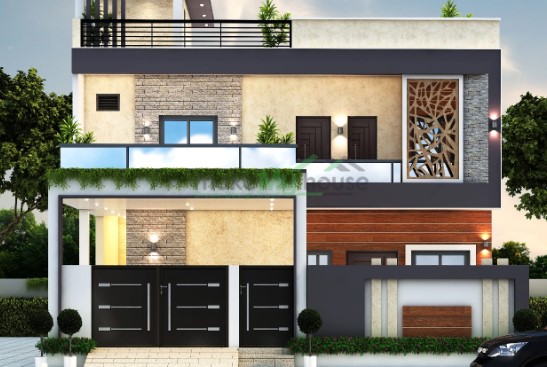
1.1 Clean Lines and Minimalism Modern homes are characterized by clean, geometric lines and an emphasis on simplicity. This minimalist approach creates spaces that feel open, uncluttered, and visually appealing.
1.2 Open Floor Plans Modern house design often features open floor plans that seamlessly integrate living, dining, and kitchen areas. This layout promotes fluidity and connectivity between different spaces, making them ideal for entertaining and family gatherings.
1.3 Abundant Natural Light Large windows, glass walls, and skylights are common features of modern homes, allowing ample natural light to flood the interior spaces. This not only enhances the aesthetics but also reduces the need for artificial lighting and promotes energy efficiency.
1.4 Integration of Indoor and Outdoor Spaces Modern house design blurs the boundaries between indoor and outdoor living, with seamless transitions between interior and exterior spaces. Features like sliding glass doors, patio areas, and rooftop terraces create a cohesive flow between the indoors and outdoors.
2. Principles of Modern House Design
2.1 Functionality Functionality is paramount in modern house design, with every element serving a purpose. Spaces are designed to be efficient, practical, and conducive to daily living, without sacrificing aesthetics.
2.2 Sustainability Modern homes often incorporate sustainable design principles and eco-friendly materials to minimize environmental impact. Features like passive solar design, green roofs, and energy-efficient appliances are common in modern house design.
2.3 Innovation Modern house design embraces innovation and cutting-edge technology to enhance comfort, convenience, and sustainability. Smart home systems, energy-efficient HVAC systems, and automated features are increasingly prevalent in modern homes.
3. Trends in Modern House Design
3.1 Modular Construction Modular construction, which involves prefabricated building components assembled off-site, is gaining popularity in modern house design. This approach offers cost savings, faster construction timelines, and greater design flexibility.
3.2 Sustainable Materials The use of sustainable materials like bamboo, reclaimed wood, and recycled glass is a growing trend in modern house design. These materials not only reduce environmental impact but also add warmth, texture, and character to modern homes.
3.3 Minimalist Interiors Minimalist interior design complements modern house architecture, with clean lines, neutral color palettes, and uncluttered spaces. Minimalist furnishings and decor allow architectural elements to take center stage while promoting a sense of calm and tranquility.
3.4 Biophilic Design Biophilic design, which seeks to connect occupants with nature, is becoming increasingly prevalent in modern house design. Features like living walls, indoor gardens, and natural materials create a sense of harmony and well-being within the home.
4. Iconic Modern House Designs
4.1 Fallingwater by Frank Lloyd Wright Fallingwater, designed by Frank Lloyd Wright, is an iconic example of modern house design. Built in 1935, this masterpiece seamlessly integrates with its natural surroundings, featuring cantilevered terraces and cascading waterfalls.
4.2 Case Study House #22 by Pierre Koenig Case Study House #22, also known as the Stahl House, is a quintessential example of mid-century modern architecture. Designed by Pierre Koenig in 1960, this iconic home features glass walls, steel framing, and panoramic views of Los Angeles.
4.3 The Glass House by Philip Johnson The Glass House, designed by architect Philip Johnson in 1949, is a pioneering example of modernist architecture. With its transparent walls, minimalist interior, and seamless integration with nature, this iconic residence remains a timeless symbol of modern design.
5. Embracing Modern House Design
Modern house design offers a compelling blend of form, function, and innovation that appeals to contemporary lifestyles. By embracing clean lines, open spaces, and sustainable principles, modern homes provide a canvas for creativity and self-expression. Whether you’re designing a new home or renovating an existing one, incorporating elements of modern house design can create a space that is both timeless and forward-thinking.

